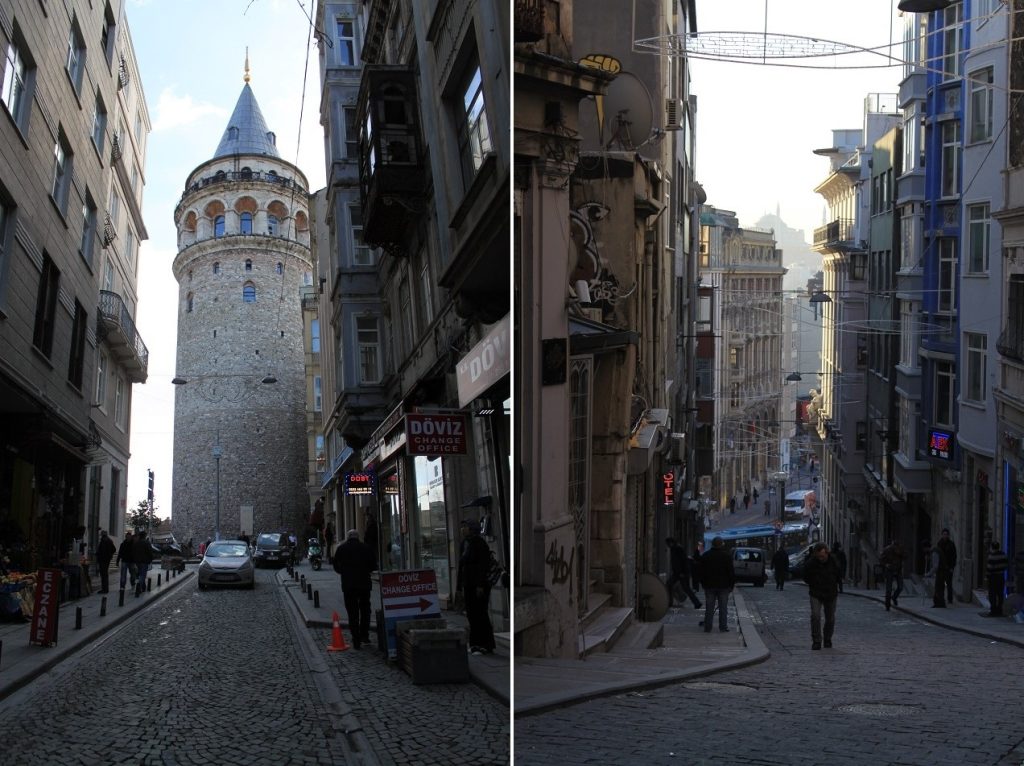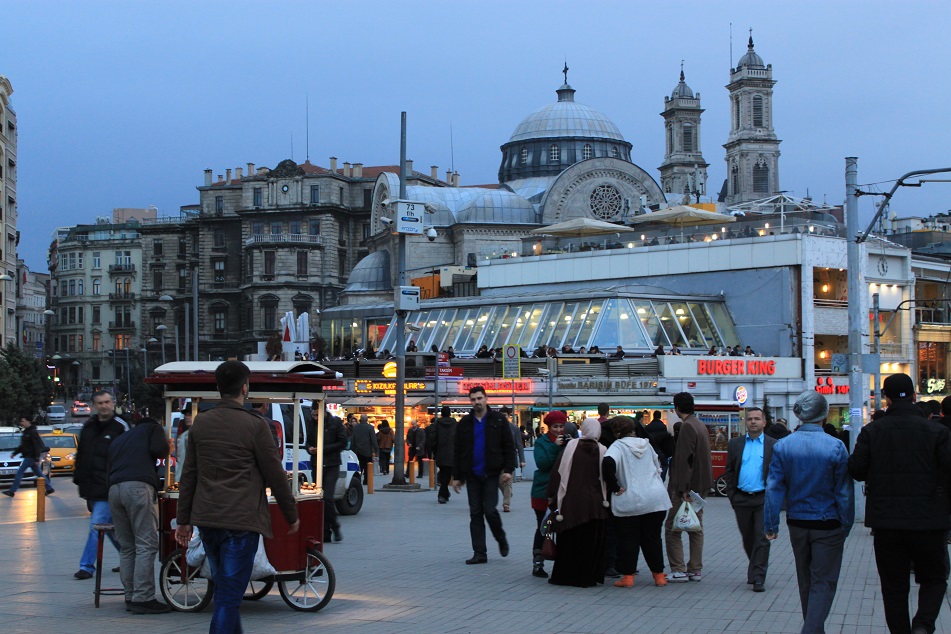A cylindrical tower covered in bricks made of stone rises among the dense residential area of Beyoğlu, a historic neighborhood across the Golden Horn from Seraglio Point where Topkapı Palace overlooks the Bosphorus. The 14th century Galata Tower – originally Tower of Christ – was built by the Genoese as the apex of the fortifications of the citadel of Galata. Now it still dominates the skyline of this lively part of Istanbul, perched on the hill of Beyoğlu.
From Galata Tower we take an uphill walk through Galip Dede Caddesi, a small cobblestone street leading to İstiklal Avenue, the center of the hype in the city. The once Greek-dominated 3 km-long avenue saw its heyday when it was deemed the center of Ottoman’s financial activities. Banks and foreign embassies lined up on both sides of the avenue, including an Italian church, a Greek Orthodox church, and an Armenian church to name some of the avenue’s most prominent evidence of its significance as a melting pot.
However, in 1955 during the height of Greco-Turkish feud most of the Greek-owned stores and restaurants along the avenue was vandalized and burned down. The pogrom resulted in the exodus of most of the residents of the once liveliest part of Istanbul within the next few decades, leading the neighborhood further into a downward spiral.
We walk down the avenue, slowly absorbing the cacophony from the fancy restaurants, fine bookstores, upscale shopping centers, and casual banters of people and street vendors. İstiklal Avenue today is clearly devoid of its dismal past more than five decades ago.
Realizing its potential as a hub for Istanbulites to meet and stroll down enjoying the day, the municipality commenced a full-scale restoration work on İstiklal Avenue and its surroundings in the early 1990s. Historical buildings were restored to their old-time glory, the entire avenue was pedestrianized, and the historic tram line was reinstalled as parts of the gentrification of the entire neighborhood.
Despite its present energy, one can still find peaceful sanctuaries off the main avenue. The Flower Passage, French Passage, and European Passage are some of the most tranquil corners for Istanbulites to wind down – as they also were during the heyday of the Ottomans.
Walking further northeast, the avenue ends at a large square where the Monument of the Republic sits at the center of it and restaurants circle the perimeter. Taksim Square is considered the heart of modern Istanbul with the central station of Istanbul metro network located right beneath.
From Galata to İstiklal Avenue to Taksim Square, it is here in Beyoğlu where the true battle for Istanbulites occurs. Women in black hijab walk side by side with those wearing western apparels. Men in business suits chat with those with prayer caps on their heads. Despite staunchly secular since 1923, Turkish are still in a perennial search for the ideal Turkish identity – Muslim, European, western, secular, religious, modern, traditional. Only one thing is certain, Turkey has and will always hold a crucial role in bridging the West and the East.




